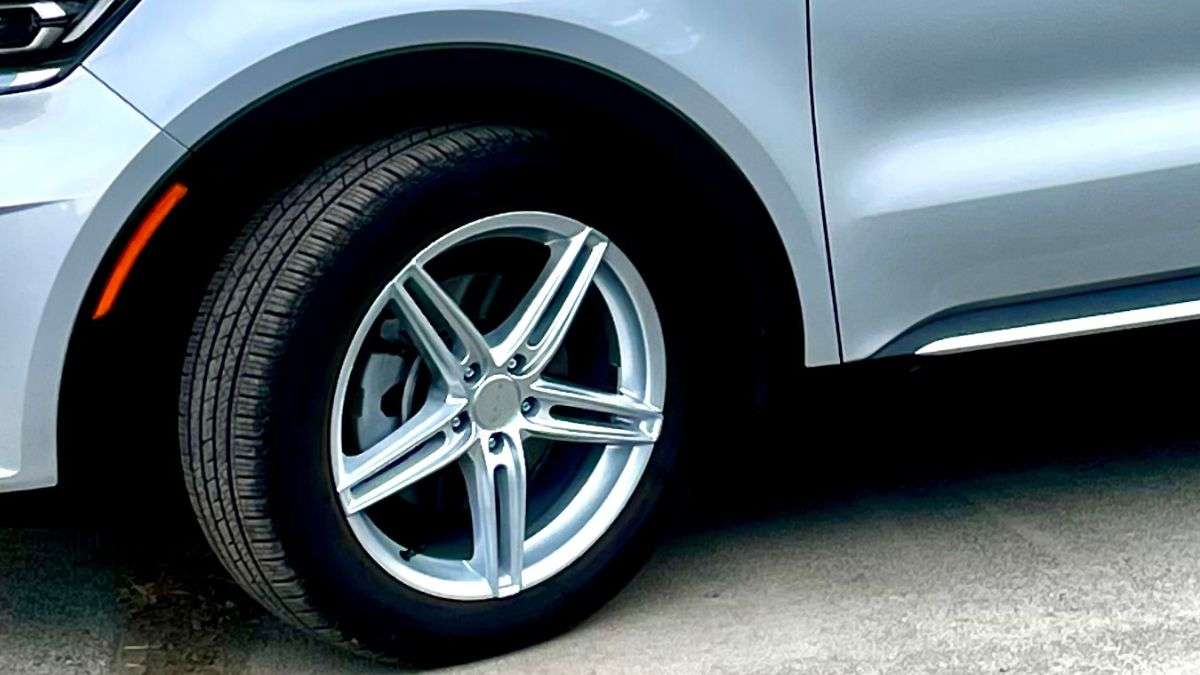While EVs are heavier, and often have more torque, reports I read seem to miss or gloss over the obvious: the problem is complex; the way people drive their EVs must be part of the issue. In fact, I think it is the biggest factor. I’ve owned 2 EVs and 2 plug-in hybrids (PHEVs), which like EVs weigh more than their gas-only counterparts. After 12 years and approximately 200,000 miles of EV/PHEV driving, I haven’t noticed any egregious failures of my factory supplied tires to meet their rated range. If any are wearing/have worn a bit prematurely, my driving habits seem clearly to be to blame My 4 plug-in vehicles came equipped from the factory with 3 different brands of energy efficient tires. Those brands were the Michelin Energy Saver (which my Chevy Volt PHEV and Tesla Model 3 came with), the Bridgestone Ecopia (which my Nissan LEAF came with) and the Continental Cross Contact (which my Kia Sorento PHEV came with). I got about 44,000 miles out of the first set of Ecopia tires my LEAF came with (rated for 40,000), and I sold it with about 23,000 miles of use on the second pair (which looked almost brand new still). The Michelin Energy Savers my Volt came with had about 30,000 miles on them when I sold it and had approximately half their tread life remaining. My Tesla and Kia, both of which I still own, are still running on their factory original tires. The Tesla has about 32,000 miles on the factory Michelin’s and I expect to get at least another 10-15,000 more before it might be time to change them for new stock (note that I do tend to drive it a little bit harder than any of my other EVs and thus the tires may be wearing out a little early). My Kia only has about 8,000 miles on the factory Continentals, and they look brand new, though obviously that isn’t much of a test yet for the Continentals (I’ll report back!). These are just 4 data points and that is practically insignificant in the grand scheme of things, however I have achieved consistent results each time and these brands are representative of perhaps the largest number of EVs’ standard equipment. The reason why my tires are lasting about as long as they are supposed to is because: one, I don’t drive my EVs and PHEVs particularly hard, particularly often; two, I rotate my tires twice each year (when I swap out all season/snow tires); three, I coast and use lighter regenerative braking as much as possible (rather than heavy braking or regeneration, which applies more torque to the tires and thus may increase wear).
I did not really see much, or any evidence, that those writing reports such as the ones in The Atlantic or the Daily Mail examined how hard people drove their EVs, whether they rotated tires properly, or whether they maximized the usage of regenerative braking. Instead they both more or less focused on the simple logic that since EVs are heavier and usually have more torque, they therefore must more rapidly degrade their tires. While there certainly seems to be truth to that, based on research findings, the media aren’t looking at the finer details and focus on the headline grabbing statements about EVs being worse polluters. If you read the report I linked to just above, you’ll see that researchers state some electric vehicle drivers report less tire wear than their gas engined counterparts, so things are unclear and it isn’t yet fair to claim it's simply due to EVs being heavier and having more torque. If we are not focusing on people’s driving habits, confirming how often they rotate tires, or what their regenerative braking patterns may be, we’re ignoring the truth. Because EVs and PHEVs have less maintenance, people may be forgetting about maintenance they still need to do (like rotate tires). Because cars are “smart” now, people may be opting for default or automated controls that end up applying extra torque to the wheels, without being aware that this is happening. And because EVs tend to have significantly more torque under the hood, people may naturally be a little more prone to stabbing their go pedals extra hard just to get the full experience and pleasure of the rush of torque (at the expense of extra tire wear). We should be addressing people’s habits as much or more than the weight or other characteristics of the EVs themselves.
Because the authors of these pieces in mass media don’t really mention these things though, I can only surmise that they are unaware (or ignoring them). Ignoring these facts is simply an error and it creates a false narrative. The real problem is that drivers need to learn new behaviors, or possibly manufacturers need to implement additional controls that lessen the torque or otherwise enable drivers to exercise better care of their tires, too.
Please leave your comments and questions below.
Image courtesy of Justin Hart.
Justin Hart has owned and driven electric vehicles for over 15 years, including a first generation Nissan LEAF, second generation Chevy Volt, Tesla Model 3, an electric bicycle and most recently a Kia Sorento PHEV. He is also an avid SUP rider, poet, photographer and wine lover. He enjoys taking long EV and PHEV road trips to beautiful and serene places with the people he loves. Follow Justin on https://www.torquenews.com/kia for regular electric and hybrid news coverage.





